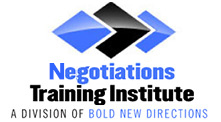As a business professional, there are times when you need to influence others to perform certain tasks, support decisions, or even purchase your product or service. You have probably found yourself in situations where you are selling ideas, seeking support, or asking for something. In order to achieve your goals, you need to be able to persuade your audience to accept your influence tactics. How can you do this effectively? The degree to which you influence and persuade the other party will determine how successfully you sell your ideas. Therefore, consider these tips for effectively persuading your audience during a negotiation.
Step One: Establish Credibility
Credibility is incredibly important to the art of persuasion because people are more likely to be persuaded by someone they trust. Credibility consists of two factors: (1) your level of expertise (2) your relationships. If you demonstrate a genuine knowledge of your subject matter, your audience is likely to associate what you are saying with truth. For example, if you talk to a car salesman who is extremely knowledgeable about the features of various cars, you are more likely to trust what he is saying. Expertise is the first step in building credibility, so spend time learning as much as you can about your subject matter before your negotiation.
Relationship building is another important factor in establishing credibility. If your audience sees that you have a good relationship with people they already trust and respect, the more likely they will be to respect you as well- and find you credible.
Step Two: Involve the Audience
People are motivated by things that matter to them which is why their involvement in the process is so important. People will be more attentive if the topic is relevant to their self-interest. Therefore, tailor the conversation to discuss why the particular subject, idea, or product that you are pitching will be valuable to your audience. Make them realize that what you are arguing is for their benefit. A great way to do this is by conducting a demonstration and asking your audience to participate. It’s much easier to persuade an audience when they see for themselves how your idea can benefit them.
Step Three: Provide Evidence
Another important persuasion technique is showing evidence. People are more likely to be persuaded when you present real evidence that what you are trying to convince them to support actually works. Evidence could be in the form of numbers and statistics. It could also be a physical demonstration. For example, this carpet cleaner works and I’ll show you.
Step Four: Make an Emotional Connection with Your Audience
The final step in persuading your audience is to connect with them on an emotional level. Research has shown that decision-making is an emotional process so you want to appeal to emotions through illustrative language and even storytelling. It’s also important to get to know your audience on a more personal level. Find common ground such as sports, hobbies, family, or some other personal connection. You want to see your audience as human and you want to make yourself more approachable as well. Oftentimes people are persuaded simply because they like you, and not always because they are completely sold on your product or idea. Remember that you are selling yourself as much as your idea, so seek ways to connect emotionally with your audience.
